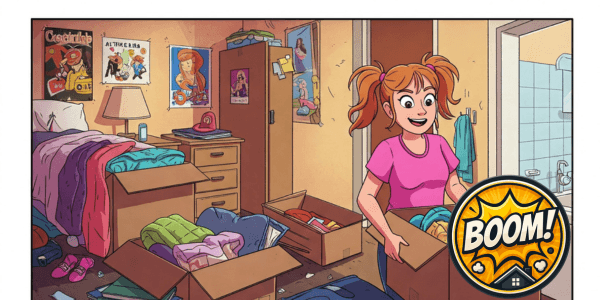Move-in Condition Report (ICR Form)
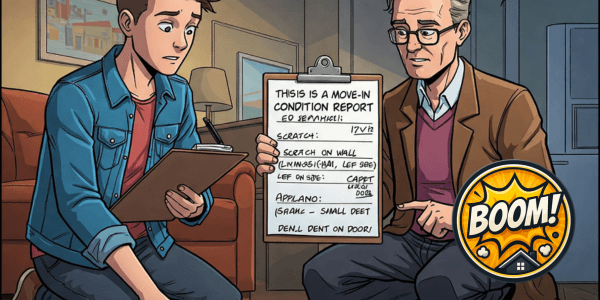
- Move-in Condition Report (ICR Form)
- Introduction
- What is a Rental Move-In Condition Report?
- Why This Document is CRUCIAL (For Both Tenants & Landlords
- What Should a Good Condition Report Include?
- Performing the Initial Inspection: Your Role
- How Does a Move-In Condition Report Affect Your Security Deposit?
- What if Your Landlord Doesn't Provide a Report?
- Conclusion – Move in Condition Report (ICR Form)
- FAQ – ICR FORM
Introduction
Moving into a new rental is exciting, but before you unpack the last box and settle in, there’s a crucial step you shouldn’t skip: thoroughly documenting the property’s condition. This is where the Move-In Condition Report, sometimes referred to as an ICR form or Condition of Premises Report, becomes your best friend. Understanding this document and how to use it correctly is vital for any renter looking to protect their security deposit.
What is a Rental Move-In Condition Report?
A rental move-in condition report is essentially a checklist and written record detailing the state of a rental property at the time a new tenant takes occupancy. It serves as a snapshot of the apartment or house before you move your belongings in and start living there. This document typically goes room by room, listing various components like walls, floors, ceilings, windows, doors, fixtures, and appliances, with space to note their condition (e.g., good, fair, poor, damaged, stained, scratched, clean, dirty). It might also be called an ICR form or a Condition of Premises Report.
The primary purpose of this form is to create an agreed-upon record of any pre-existing issues. Both the tenant and the landlord (or property manager) should sign and date the report after inspecting the property together or after the tenant completes their initial inspection within a specified timeframe (often a few days after move-in). For General Move-In Help check out our checklist! Renter Move-In Checklist | 5 Free Essential Steps
Why This Document is CRUCIAL (For Both Tenants & Landlords
This seemingly simple checklist is arguably one of the most important pieces of paperwork you’ll handle when renting. Here’s why a move in condition report is important for tenants:
- Protecting Your Security Deposit: This is the biggest reason. Your security deposit is held by the landlord to cover damages you might cause beyond “normal wear and tear – Understanding Normal Wear and Tear.” The Move-In Condition Report is your primary evidence of what the property looked like before you moved in. If the landlord claims damages when you move out, you can point to the report to show that the scratch on the floor or the stain on the carpet was already there.
- Avoiding Disputes: A clear, agreed-upon record reduces the likelihood of disagreements about property condition when you eventually move out. It sets a baseline for the tenancy.
- Proof in Legal Situations: In the unfortunate event of a dispute over security deposit return and move out condition that ends up in small claims court or involves a housing authority complaint, your signed Move-In Condition Report is key evidence of the property’s initial state.
It’s also beneficial for landlords, as it provides documentation to justify legitimate deductions for damages caused by the tenant, helping them maintain their property’s value.
What Should a Good Condition Report Include?
A comprehensive Move-In Condition Report should ideally include:
- Property Details: Address, unit number, date of inspection, lease start date, names of tenants and landlord/manager.
- Room-by-Room Breakdown: Each room (living room, bedroom, kitchen, bathroom, etc.) and areas like hallways, closets, patios, garages.
- Item Checklist: Within each room, a list of items like walls, ceiling, floor, windows, doors, lights, outlets, switches, blinds/curtains, fixtures (sink, toilet, shower, tub), appliances (stove, refrigerator, dishwasher, washer/dryer).
- Condition Notes: Space next to each item to write detailed descriptions of its condition (e.g., “small chip in paint,” “carpet worn near doorway,” “grout stained,” “appliance scratched on side,” “window seals cracked,” “door squeaks,” “light fixture loose”). Use terms like “Good,” “Fair,” “Poor,” “Damaged,” “New,” or “N/A” as appropriate.
- Cleanliness Notes: Note the level of cleanliness, especially in kitchens and bathrooms (e.g., “oven clean,” “grout mildewed,” “dusty blinds”).
- Tenant Comments Section: A dedicated space for you to add notes about anything not specifically listed or to provide overall comments.
- Signatures and Date: Spaces for the tenant(s) and landlord/manager to sign and date, indicating they have reviewed the report.
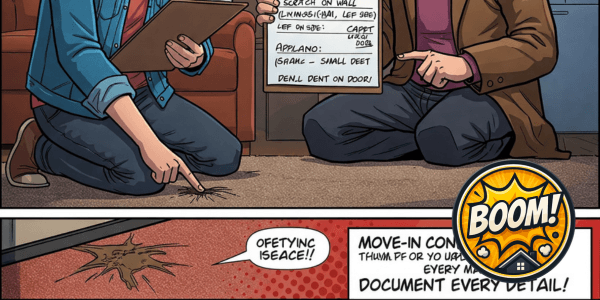
Performing the Initial Inspection: Your Role
Doing a thorough initial inspection rental property is your responsibility as a tenant to protect yourself. This walk-through, guided by the Move-In Condition Report, is where you identify and document every issue before you fully move in.
Tips for Tenants When Completing the Report:
Being thorough when completing your apartment move in checklist condition is key. Think of it as building your case to get your deposit back!
- Take Your Time: Don’t rush. Do the inspection when you have time to be detailed.
- Go Room by Room: Use the form as a guide. Inspect every item listed.
- Be Specific: Instead of just saying “floor damaged,” write “scratches on hardwood floor near window.” Note the location of the issue.
- Test Everything: Turn on lights, flush toilets, run faucets, open and close windows and doors, check that appliances turn on. Note if anything doesn’t work correctly.
- Document Everything – Especially with Photos & Videos! This is CRITICAL. Take clear photos and videos of everything, especially pre-existing damage, stains, or cleanliness issues. Date-stamp your media if possible (your phone probably does this automatically). This visual record is powerful proof of property condition rental.
- Use the Comments Section: Add details that the checklist format might not capture. Reference your photos/videos (e.g., “See photo 3a for scratch on counter”).
- Note Cleanliness: If areas aren’t perfectly clean (e.g., dusty baseboards, residue in oven), note it down.
- Return Promptly: Landlords often give you a timeframe (e.g., 3-7 days) to return the completed report. Meet this deadline.
- Keep a Copy! Ensure you and the landlord both sign the final report and you keep a copy (digital or physical).
How Does a Move-In Condition Report Affect Your Security Deposit?
Understanding how does move in condition report affect security deposit is straightforward: it provides the baseline for comparison at the end of your tenancy. At the move out inspection, the landlord will compare the current state of the property to the initial move in vs move out condition report (and your documentation).
They can legally deduct from your security deposit to fix damages caused by you that are beyond “normal wear and tear rental”. Normal wear and tear is the minor deterioration that occurs with ordinary use (e.g., faded paint, minor carpet wear in traffic areas, small scuff marks). Damage is due to carelessness, neglect, or abuse (e.g., large holes in walls, significant stains, broken windows, damaged fixtures). Your detailed Move-In Condition Report is your evidence that issues existed before you moved in, helping you dispute deductions for those items. How to Get Your Security Deposit Back After Moving Out depends heavily on this initial documentation.
What if Your Landlord Doesn’t Provide a Report?
If your landlord doesn’t give you a Move-In Condition Report, create your own! Write a detailed letter or list documenting the condition of the property, room by room. Take extensive photos and videos. Send this documentation to your landlord (via email or certified mail) within a few days of moving in, keeping copies and proof of sending. This creates your own timestamped record.
Conclusion – Move in Condition Report (ICR Form)
The Move-In Condition Report is an indispensable tool for any renter. While the specific ICR form rental isn’t standardized nationwide, the practice of meticulously documenting property condition upon moving in during the initial inspection rental property is your best defense against unfair deductions from your security deposit. Take your time, be thorough, use photos/videos, and keep a copy. Knowing how to effectively use this report and understanding how does move in condition report affect security deposit is a key part of protecting your finances as a tenant.
Disclaimer: This article provides general information and is not intended as legal advice. Landlord-tenant laws regarding move-in reports and security deposits vary by jurisdiction. Consult with a qualified attorney or a local tenant’s rights organization for advice specific to your situation and location.
FAQ – ICR FORM
Is a move in condition report legally required for all rentals, or do landlords have to provide one?
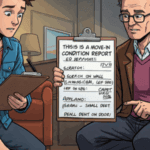
Requirements for move-in condition reports vary significantly. They are not standard nationwide, and landlords are not legally required to provide one in every state or city. However, it is always highly recommended for tenants to complete one, whether provided by the landlord or created themselves, as it’s crucial documentation for your tenancy.
What should I do if my landlord does not provide me with a move in condition report form?
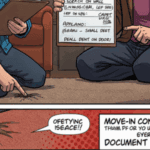
If your landlord doesn’t give you a form, don’t skip this critical step! You should create your own detailed documentation. Go through the property room by room, writing down the condition of walls, floors, fixtures, appliances, and any existing damage or cleanliness issues. Be specific and take extensive photos and videos. Send this documentation to your landlord (keeping proof you sent it) and retain copies for your records
How long do I have to return the completed move in condition report to my landlord after moving in?

The timeframe to return the report is often specified in your lease or by state/local law, commonly ranging from 3 to 7 days after you take occupancy. Always check your lease and local laws. It’s essential to complete and return it promptly within the given timeframe, and keep proof that you submitted it.
What level of detail is needed when filling out an apartment move in checklist condition form?

Be as thorough and specific as possible. Don’t just write “floor damaged”; note “scratch on hardwood floor in living room near fireplace” or “stain on carpet in bedroom closet.” Document even minor issues and cleanliness concerns. Taking detailed photos and videos is key to backing up your written notes. For a comprehensive guide on starting your tenancy right, see our [Renter Move-In Checklist | 5 Free Essential Steps]
How does move in condition report affect security deposit deductions when I move out?

The move-in condition report is your primary evidence of the property’s state before you moved in. When you move out, the landlord will compare the property’s current condition to this report. They can only legally charge you for damages you caused beyond “normal wear and tear.” Your report proves which issues existed previously, helping you dispute unfair deductions for pre-existing damage.
What if the landlord disputes damages I noted on the move in condition report, or charges me for things I documented as pre-existing?

If your landlord disputes your report or makes deductions for damages you documented as pre-existing, refer back to your signed copy of the report and your photos/videos as evidence. Try to communicate with your landlord to resolve the issue. If you cannot agree, you may need to escalate the issue. Learn more about your options in our guide on [How to File a Complaint Against a Landlord]
Are there specific tenant responsibilities related to documenting property condition at move-in?

While not always legally mandated in every location, thoroughly documenting the property condition at move-in is a critical tenant responsibility for protecting your own interests, particularly your security deposit. It’s part of being a responsible renter and having proof of the property’s initial state is your best defense against future disputes over damages.

How to replace a smoke alarm battery | Free Guide – RepairBoom
How to unclog a drain in 4 easy steps | Free Guide – RepairBoom
How To Fix A Sliding Closet Door In 3 Easy Steps
How to Get Your Security Deposit Back After Moving Out: In 4 Easy Steps


